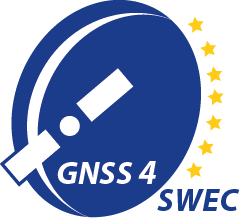Dr
Eric Pottiaux
(Royal Observatory of Belgium (ROB)), Dr
Roeland Van Malderen
(Royal Meteorological Institute of Belgium)
26/04/2016, 14:00
Michal Elias
(Geodetic Observatory Pecny, Czech Republic)
26/04/2016, 14:25
Technical Session on Homogenization Algorithms
Oral Presentation
Unexpected changes in the time-series are caused by several (usually non-climatic) factors. We applied statistical approach to analyze change-point detection. The method is based on a second correlated series that can be relied on to be correct. In the presented work we also describe the critical values calculation that was used. Beside the main presented method we also applied other technique...
Mr
Peep Miidla
(University of Tartu, Estonia)
26/04/2016, 14:45
Technical Session on Homogenization Algorithms
Oral Presentation
During this Academic Year, I studied the approach of Singular Spectral Analysis (SSA). It seems interesting and useful in several applications, included processing of atmospheric data with homogenization purposes. The main idea is to fit original data with SSA and then to compare the approaches of change point detection for original and reconstructed data.
Another approach for change point...
Dr
Olivier Bock
(IGN)
26/04/2016, 15:05
Oral Presentation
Dr
Roeland Van Malderen
(Royal Meteorological Institute of Belgium)
26/04/2016, 15:25
Technical Session on Homogenization Algorithms
Oral Presentation
We present three different tests, based on non-parametric techniques, for the objective identification of discontinuities in the mean (or median) of time series. These change-point tests are able to identify multiple discontinuities and requires no 'metadata' or comparison with neighbouring stations or reference data. These tests are based on (the sum of) the ranks of the values in the...
Michal Elias
(Geodetic Observatory Pecny)
26/04/2016, 16:15
Homogenisation : Status and Expectations of Individual Work
Oral Presentation
We analyzed the method related to change-point detection. The method is based on a second correlated series that can be relied on to be correct. The preliminary results show that over 30% of analyzed monthly time-series are presented as being inhomogeneous and this also applies to over 65% of daily time-series data.
Mr
Simeonov Tzvetan
(GFZ)
26/04/2016, 16:25
Homogenisation : Status and Expectations of Individual Work
Oral Presentation
The homogenization activities in GFZ Potsdam consist of two different efforts: homogenization of IWV and ZTD time series from GNSS ground-based stations and homogenization of VLBI derived coordinates and troposphere products. The latest studies in the GNSS field were the analysis of 101 stations time series on a global scale using Penalized Maximal t test (PMT). The VLBI effort is an analysis...
Dr
Olivier Bock
(IGN)
26/04/2016, 16:35
Oral Presentation
Dr
Roeland Van Malderen
(Royal Meteorological Institute of Belgium)
26/04/2016, 16:45
Homogenisation : Status and Expectations of Individual Work
Oral Presentation
We present the break points that have been identified in the IGS repro 1 IWV series by applying nonparametric rank-sum tests on the daily and monthly IWV differences of the IGS repro 1 reference dataset and the ERA-interim reanalysis output at the station locations.
We also applied the same tests on the IGS repro 1 ZTD and IWV time series and compare all the identified break points with each...
Dr
Anna Klos
(Military University of Technology, Warsaw, Poland)
27/04/2016, 09:00
Noise and Signals in the time series
Oral Presentation
Within last 26 years, the Zenith Total Delay (ZTD) or Integrated Water Vapour (IWV) time series have been estimated together with position series during processing or reprocessing of GNSS data. The basic advantage of ZTD and IWV time series analysis is a possible application to monitoring of climate changes. In this kind of studies, trend and its uncertainty indicating a significance are...
Mrs
Selma ZENGİN KAZANCI
(WG1)
27/04/2016, 09:20
Noise and Signals in the time series
Oral Presentation
Seasonal components in the ZTD (Zenith Tropospheric Delay) and IWV (Integrated Water Vapour) time series are important and provide information about weather conditions in a given region. The main purpose of this research is to analyze linear trends and seasonal components of ZTD’s and IWS’s in GPS reprocessing campaign at selected stations in Europe (IGS repro1 dataset-URL1). The seasonal...
Dr
Anna Klos
(Military University of Technology, Warsaw, Poland)
27/04/2016, 09:40
Generation of synthetic dataset(s)
Oral Presentation
A task of homogenisation of tropospheric data estimated in GNSS processing is based on a proper detection of possible offsets due to changes in hardware or equipment, earthquakes or any other artificial events. This task is aimed at determination of reliable trend and its uncertainty that is used in climate studies since any undetected offset influences the value of trend and increases its...
27/04/2016, 10:00
Dr
Eric Pottiaux
(Royal Observatory of Belgium (ROB))
27/04/2016, 11:00
Future Plans and Outcome of our Activities
Oral Presentation
As stated in the Memorandum of Understanding (MoU), the WG3 of the COST Action 1206 (GNSS4SWEC) targets to standardize the methods, exchange format for both the dataset and its associated meta-data. In this presentation, we will present and discuss teh different possibilities to standardize the exchange format for the dataset, the break-points and the associated meta-data within the sub-WG3...
Dr
Enric Aguilar
(Center for Climate Change)
27/04/2016, 14:00
Oral Presentation

